High-Visibility Reflective Safety Clothing for Ultimate Protection
The Critical Role of Advanced Safety Clothing in Industrial Environments
In hazardous work environments, the effectiveness of personal protective equipment (PPE) is paramount. Among the most crucial components of PPE, safety clothing stands as the first line of defense against a myriad of workplace risks. This article delves into the intricate world of modern workwear, exploring its technical specifications, manufacturing processes, key application scenarios, and the tangible advantages it offers to B2B clients across diverse industries. We aim to provide a comprehensive understanding for decision-makers seeking to optimize worker safety and operational efficiency.

Current Industry Trends in Reflective Safety Clothing
The market for reflective safety clothing is experiencing dynamic evolution, driven by stricter regulatory compliance, technological advancements, and a heightened focus on worker well-being. Key trends include the integration of smart textiles, enhanced material durability, and a greater emphasis on ergonomic design to improve wearer comfort and acceptance. There's also a rising demand for reflective safety clothing that offers multi-functional protection, such as flame resistance combined with high visibility, or anti-static properties.
- Smart Technology Integration: Incorporating LEDs, GPS trackers, and biometric sensors for real-time monitoring of worker safety and environmental conditions.
- Sustainable Materials: A growing push towards eco-friendly and recycled fabrics for high-visibility garments, aligning with corporate social responsibility initiatives.
- Customization & Personalization: Beyond branding, tailored fits and modular designs to suit specific job roles and environmental conditions.
- Improved Ergonomics: Lightweight, breathable fabrics and anatomical designs that reduce wearer fatigue and allow for greater freedom of movement, crucial for tasks requiring precision.
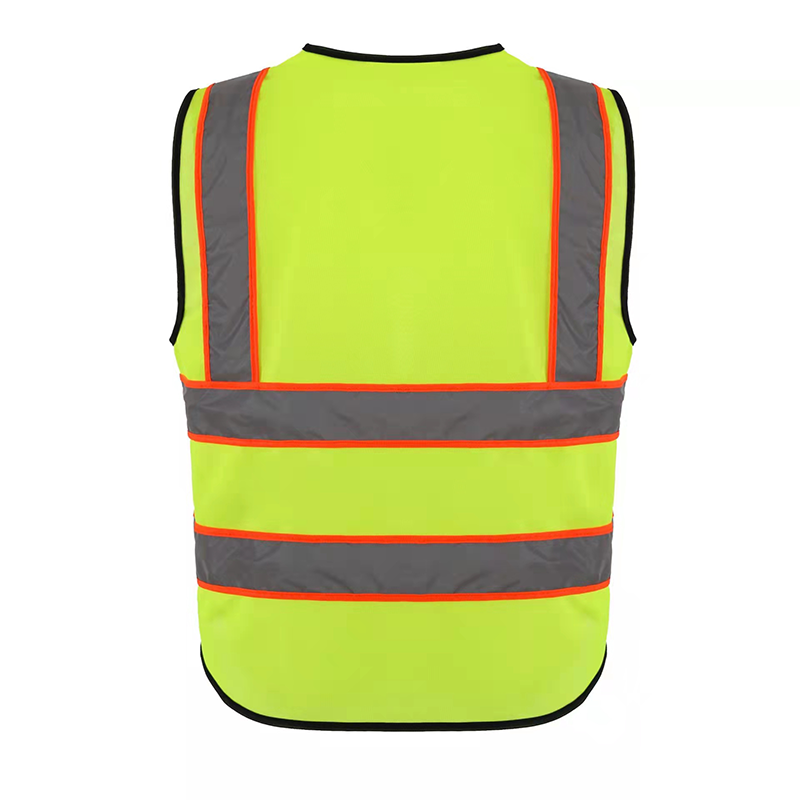
Technical Specifications and Core Materials
The effectiveness of safety clothing is rooted in its technical specifications and material composition. High-visibility garments typically rely on fluorescent background material for daytime visibility and retro-reflective material for nighttime or low-light conditions. Common materials include:
- Polyester Mesh: Lightweight, breathable, and durable, ideal for vests and warm-weather applications.
- Woven Polyester/Oxford Fabric: Offers superior strength, abrasion resistance, and often treated for water resistance. Used for jackets and trousers.
- Retro-reflective Tapes: Micro-prismatic or glass bead technology that reflects light directly back to the source, crucial for visibility. Common widths are 5cm (2 inches).
Key Technical Parameters for Reflective Safety Vests
| Parameter | Description/Specification |
|---|---|
| Material Composition | 100% Polyester Mesh (120-150 GSM) |
| Reflective Material | High-intensity Micro-prismatic or Glass Bead Reflective Tape (ANSI/ISEA 107 Class 2/3 certified) |
| Color Fastness | Grade 4-5 (ISO 105-C06) |
| Tensile Strength | ≥300N (ASTM D5034) |
| Washability Cycles | ≥25 cycles at 60°C (ISO 6330) |
| Background Fabric Color | Fluorescent Yellow-Green, Fluorescent Orange-Red (as per ANSI/ISEA 107 & EN ISO 20471) |
| Closure Type | Velcro, Zipper, or Snap Buttons |
These parameters ensure the garment meets critical performance benchmarks for visibility, durability, and compliance with international standards such as ANSI/ISEA 107 (USA) and EN ISO 20471 (Europe).

Manufacturing Process of Reflective Safety Clothing
The production of high-quality reflective safety clothing involves a precise series of steps, ensuring both functionality and adherence to stringent safety standards. From raw material sourcing to final quality inspection, each stage is critical.
Process Flow Schematic:
1. Material Sourcing & Inspection:
- Acquisition of certified fluorescent polyester mesh/fabric and retro-reflective tapes from approved suppliers.
- Initial quality check for color consistency, fabric integrity, and retro-reflectivity performance (e.g., luminance factor).
2. Cutting & Patterning:
- Precision cutting of fabric according to pre-designed patterns (CAD-assisted) to minimize waste and ensure consistent sizing.
- Separate cutting of reflective tapes based on design specifications for optimal visibility zones.
3. Sewing & Assembly:
- Industrial sewing machines are used to assemble the garment components.
- Attachment of reflective tapes, zippers, Velcro, and other fasteners with reinforced stitching for durability.
- Specialized stitching techniques prevent fraying and ensure longevity under demanding conditions.
4. Branding & Customization (OEM Printing Logo):
- Application of client logos and personalized text via screen printing, heat transfer, or embroidery, typically on non-reflective areas.
- Ensuring logo visibility and durability without compromising the garment's reflective properties.
5. Quality Control & Testing:
- Visual Inspection: Checking for defects, loose threads, correct stitching.
- Dimensional Check: Verifying sizing against specified standards.
- Retro-reflectivity Test: Using a retroreflectometer to ensure the reflective material meets minimum photometric performance requirements (e.g., >330 cd/(lx·m²) for Class 2 tape).
- Wash Durability Test: Assessing the performance of both fabric and reflective tape after multiple wash cycles (ISO 6330).
- Compliance Verification: Ensuring the final product meets ISO 20471, ANSI/ISEA 107, and other relevant safety standards.
6. Packaging & Dispatch:
- Individual packing and bulk boxing with appropriate labeling for traceability and protection during transit.
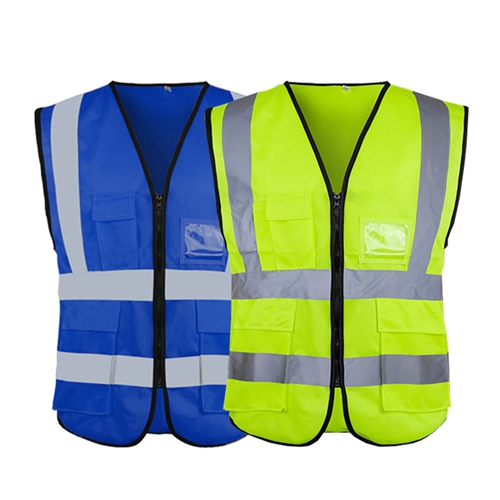
Technical Advantages in Application Scenarios
Modern safety clothing offers significant technical advantages that translate directly into enhanced worker safety and operational benefits across various demanding environments.
- Superior Visibility: Fluorescent materials combined with certified retro-reflective tapes significantly increase worker conspicuity in low light, darkness, and inclement weather. For instance, an orange reflective safety clothing vest is highly effective in environments with heavy foliage or construction sites where other colors might blend in.
- Durability & Longevity: High-grade polyester fabrics and robust stitching ensure garments withstand harsh industrial conditions, frequent washing, and prolonged exposure to elements, offering a service life exceeding typical wear-and-tear expectations.
- Comfort & Ergonomics: Lightweight, breathable mesh designs prevent heat stress, while adjustable closures and flexible fits ensure comfort and unrestricted movement, promoting consistent wear.
- Regulatory Compliance: Products manufactured to international standards like ANSI/ISEA 107 and EN ISO 20471 guarantee legal compliance and reduce liability for businesses. This is particularly relevant for sectors demanding high-visibility safety clothing china exports to global markets.
- Multi-Hazard Protection: Advanced garments can integrate features like flame resistance (NFPA 2112), arc flash protection (ASTM F1506), and anti-static properties (EN 1149), providing comprehensive safety solutions for complex work environments.

Target Industries and Application Scenarios
The demand for high-visibility safety clothing spans a wide array of industries where workers face risks from moving vehicles, machinery, or low-light conditions. These include:
- Construction & Roadwork: Workers on highways, building sites, and utility installations require maximum visibility to prevent accidents involving heavy machinery and traffic.
- Logistics & Warehousing: Employees operating forklifts, loading docks, and working in dimly lit warehouses benefit from enhanced conspicuity.
- Emergency Services: Police, fire, and EMT personnel rely on reflective garments for safety during incident response, especially at night or in adverse weather.
- Petrochemical & Mining: Beyond visibility, these sectors require garments with additional protective features like flame resistance and anti-static properties.
- Water Supply & Drainage: Workers often operate near water bodies or in confined spaces with limited visibility, making reflective PPE essential.
- Airports & Ports: Ground crew and dock workers operate in complex environments with constant vehicle and equipment movement, necessitating clear visibility.
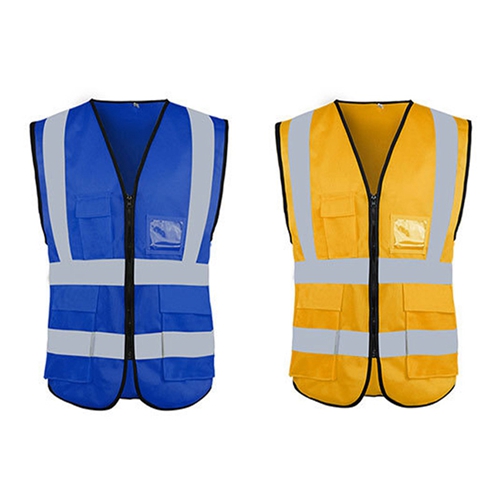
Vendor Comparison: Key Factors for Choosing a Supplier
When looking to buy reflective safety clothing, B2B procurement professionals must consider several critical factors beyond just price. A reliable supplier ensures product quality, compliance, and consistent service.
| Feature | Premium Vendor Characteristics | Standard Vendor Characteristics |
|---|---|---|
| Certifications | ISO 9001, ANSI/ISEA 107, EN ISO 20471, OEKO-TEX certified materials. Full test reports available. | Basic CE marking, limited or no detailed test reports. |
| Material Quality | High-grade polyester (120-150 GSM), durable reflective tape (3M, Reflexite equivalent). | Lower GSM polyester, generic reflective tape with shorter service life. |
| Customization | Full OEM/ODM capabilities (logo printing, custom designs, specialized features), low MOQ for custom orders. | Basic logo printing only, high MOQ for design changes. |
| Lead Time & Fulfillment | Reliable lead times (2-4 weeks), efficient global logistics, inventory management for rush orders. | Variable lead times, potential delays, limited rush order capacity. |
| After-Sales Support | Dedicated account manager, comprehensive warranty, easy return/exchange policy, technical support. | Limited support, stringent return policies, focus on initial sale. |

Customized Solutions: OEM Printing Logo Personalized Reflective Safety Vest
Beyond standard offerings, the ability to provide customized reflective safety clothing is a significant advantage for businesses looking to enhance brand presence and meet specific operational requirements. Our OEM printing logo personalized reflective safety vests are a prime example of such a solution.
- Brand Reinforcement: Incorporating company logos and branding elements on safety vests fosters a professional image and promotes corporate identity while maintaining safety standards.
- Tailored Functionality: Custom options include varying pocket configurations, ID badge holders, microphone loops, and specialized closures to suit diverse job roles.
- Material & Color Options: While fluorescent yellow-green and orange reflective safety clothing are standard, custom orders can specify particular fabric blends or colors where allowed by regulations.
- Size & Fit Customization: Ensuring a comfortable and appropriate fit for all workers, including plus sizes or specific ergonomic requirements, to prevent snagging or restricted movement.
The OEM service ensures that every vest not only complies with safety standards but also acts as an effective marketing tool for the client's brand.
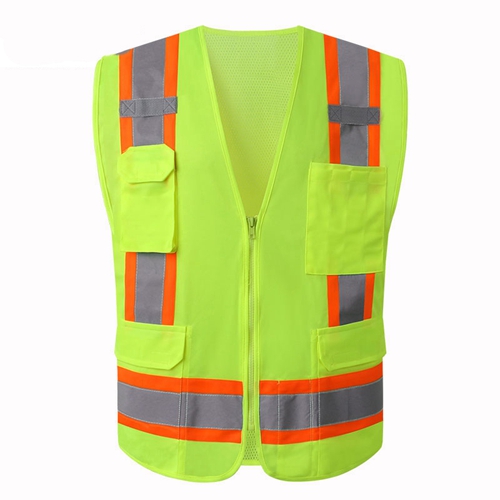
Application Case Studies
Real-world applications highlight the impact of quality safety clothing.
Case Study 1: Urban Infrastructure Project
- Client: Major Municipal Road Construction Contractor.
- Challenge: High-traffic urban environment, night shifts, and diverse weather conditions requiring consistent worker visibility and protection.
- Solution: Implementation of ANSI/ISEA 107 Class 3 compliant fluorescent yellow-green reflective safety jackets and vests with integrated rain protection. Custom company logos were applied for team identification.
- Outcome: A 40% reduction in near-miss incidents reported over a six-month period, improved worker morale due to enhanced safety and comfort, and seamless compliance with local safety regulations.
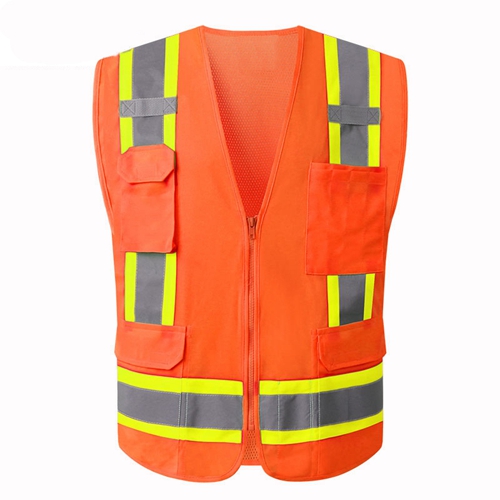
Case Study 2: Industrial Logistics Hub
- Client: Large-scale logistics and distribution center with heavy forklift traffic.
- Challenge: Maintaining high visibility for warehouse personnel in busy, often noisy, and artificially lit environments, preventing collisions with moving equipment.
- Solution: Provision of customized reflective safety clothing vests (orange reflective safety clothing) with reinforced stitching and multiple utility pockets for tools. The vests featured high-contrast reflective banding and the company's distinct branding.
- Outcome: Significant improvement in visual communication between equipment operators and ground staff, contributing to a 25% decrease in workplace accidents involving vehicles within the first year.

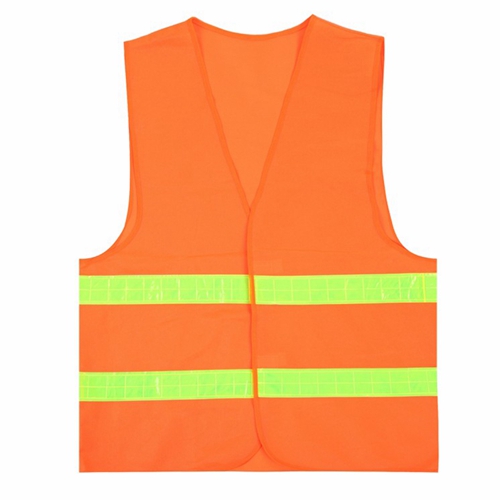


Ensuring Trustworthiness and Authoritativeness
Our commitment to quality and safety is underpinned by robust certifications, rigorous testing, and transparent business practices.
- Certifications: All our safety clothing products comply with international standards such as ANSI/ISEA 107-2020 and EN ISO 20471:2013+A1:2016, ensuring they meet the highest global benchmarks for high-visibility PPE. Our manufacturing facilities are ISO 9001:2015 certified for quality management systems.
- Partnerships: We collaborate with leading fabric and reflective material suppliers to ensure the use of premium components, guaranteeing performance and longevity.
- Years of Service: With over 15 years of experience in the safety equipment industry, we have developed deep expertise and a proven track record of delivering reliable PPE solutions to B2B clients worldwide.
- Test Data: Our products undergo independent third-party lab testing for retro-reflectivity, wash durability, colorfastness, and material strength. Detailed test reports are available upon request to verify performance.
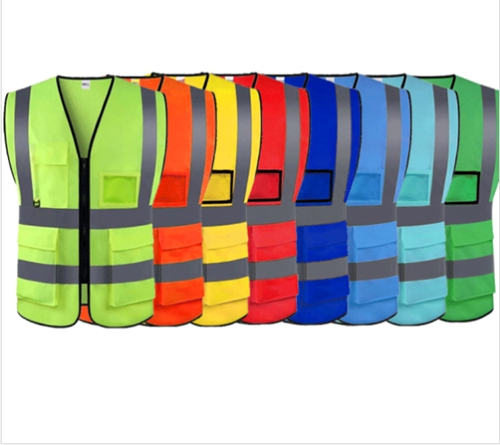
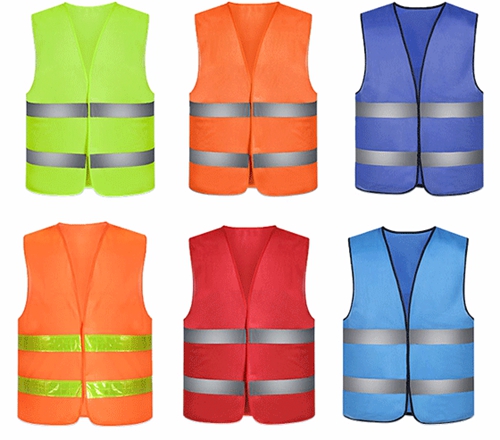

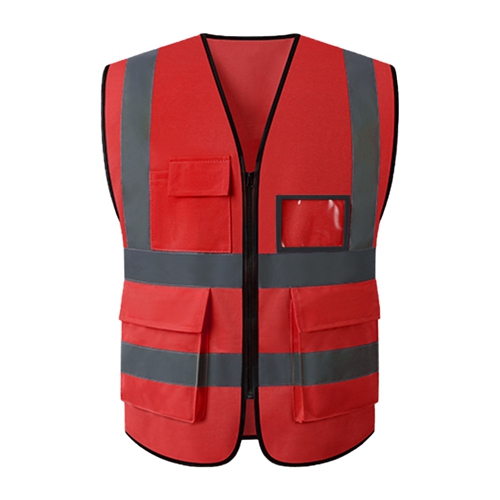
Frequently Asked Questions (FAQ)
Q: What makes your reflective safety clothing compliant with international standards?
A: Our garments are designed and manufactured in strict adherence to ANSI/ISEA 107 and EN ISO 20471. This includes using certified fluorescent background materials and retro-reflective tapes that meet specified minimum photometric performance requirements. Third-party testing validates this compliance.
Q: Can we customize vests with our company logo and specific features?
A: Absolutely. We offer comprehensive OEM/ODM services. Clients can specify logo printing (screen print, heat transfer, embroidery), choose specific pocket designs, closure types, and even request minor design adjustments to meet their unique operational needs, all while ensuring safety compliance.
Q: What is the expected service life of your reflective safety clothing?
A: The service life depends on usage frequency, care, and specific product type. However, our high-quality materials and construction are designed to withstand 25-50 wash cycles while maintaining reflective performance, translating to a typical service life of 6-12 months under normal industrial use, often longer.
Q: What are the lead times for bulk orders and customized products?
A: For standard bulk orders, lead time is typically 2-4 weeks. Customized orders, including OEM logo printing, generally require 4-6 weeks, depending on the complexity of customization and order volume. We maintain transparent communication regarding production schedules.
Q: What warranty and after-sales support do you provide?
A: We offer a 1-year warranty against manufacturing defects. Our dedicated customer support team is available to assist with any product inquiries, returns, or technical support needs, ensuring client satisfaction long after purchase. We also provide guidance on proper care and maintenance to maximize product lifespan.
Lead Time, Warranty, and Customer Support
We understand the critical nature of timely delivery and reliable support in B2B operations. Our processes are designed for efficiency and client satisfaction:
- Lead Time: Standard stock orders are processed within 3-5 business days. Bulk orders without customization typically ship within 2-4 weeks. Custom OEM orders are generally delivered within 4-6 weeks, with expedited options available upon request and feasibility assessment.
- Warranty: All our reflective safety clothing products come with a 1-year limited warranty covering manufacturing defects. This ensures peace of mind regarding the quality and integrity of your investment.
- Customer Support: Our dedicated B2B client success team provides comprehensive support from initial inquiry through order fulfillment and after-sales service. We offer technical assistance, product usage guidance, and efficient resolution for any issues that may arise. Reachable via email, phone, and online portal.

References
- ANSI/ISEA 107-2020: American National Standard for High-Visibility Safety Apparel and Accessories.
- EN ISO 20471:2013+A1:2016: High-visibility clothing - Test methods and requirements.
- ISO 9001:2015: Quality management systems — Requirements.
- OSHA (Occupational Safety and Health Administration) Regulations and Standards for Personal Protective Equipment.
- National Safety Council (NSC) Workplace Safety Statistics.
-
Safety Helmet for Toddler: Protecting Little Explorers Worldwide
NewsNov.25,2025
-
Essential Guide to Safety Helmets for the Oil and Gas Industry
NewsNov.24,2025
-
Essential Guide to Safety Helmet for Baby – Protect Little Explorers with Confidence
NewsNov.24,2025
-
Comprehensive Guide to Safety Helmet Factory – Global Insights & Innovations
NewsNov.23,2025
-
Rockman Safety Helmet: Ultimate Industrial Head Protection Guide
NewsNov.23,2025
-
Race Safety Helmet – Essential Protection for Motorsport Champions
NewsNov.22,2025
